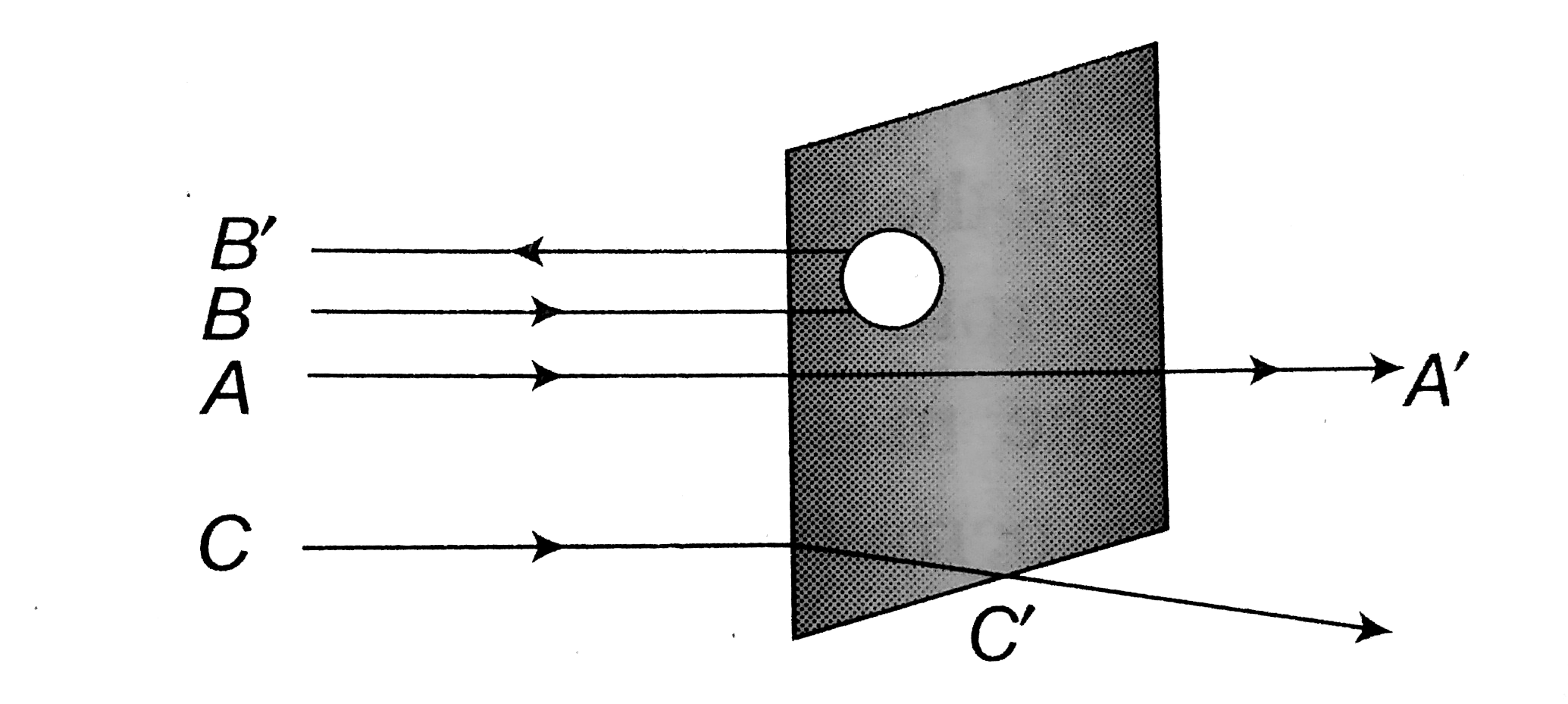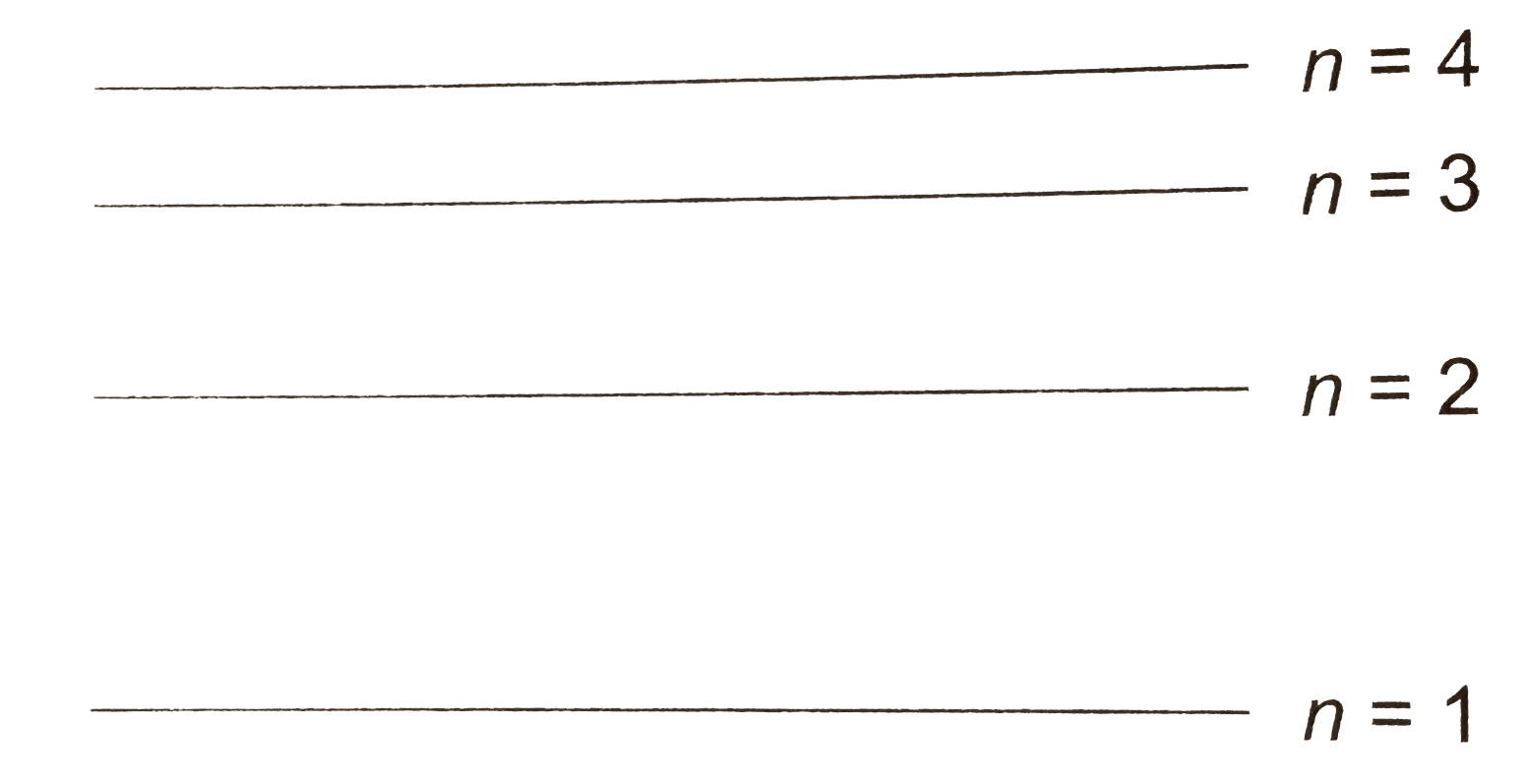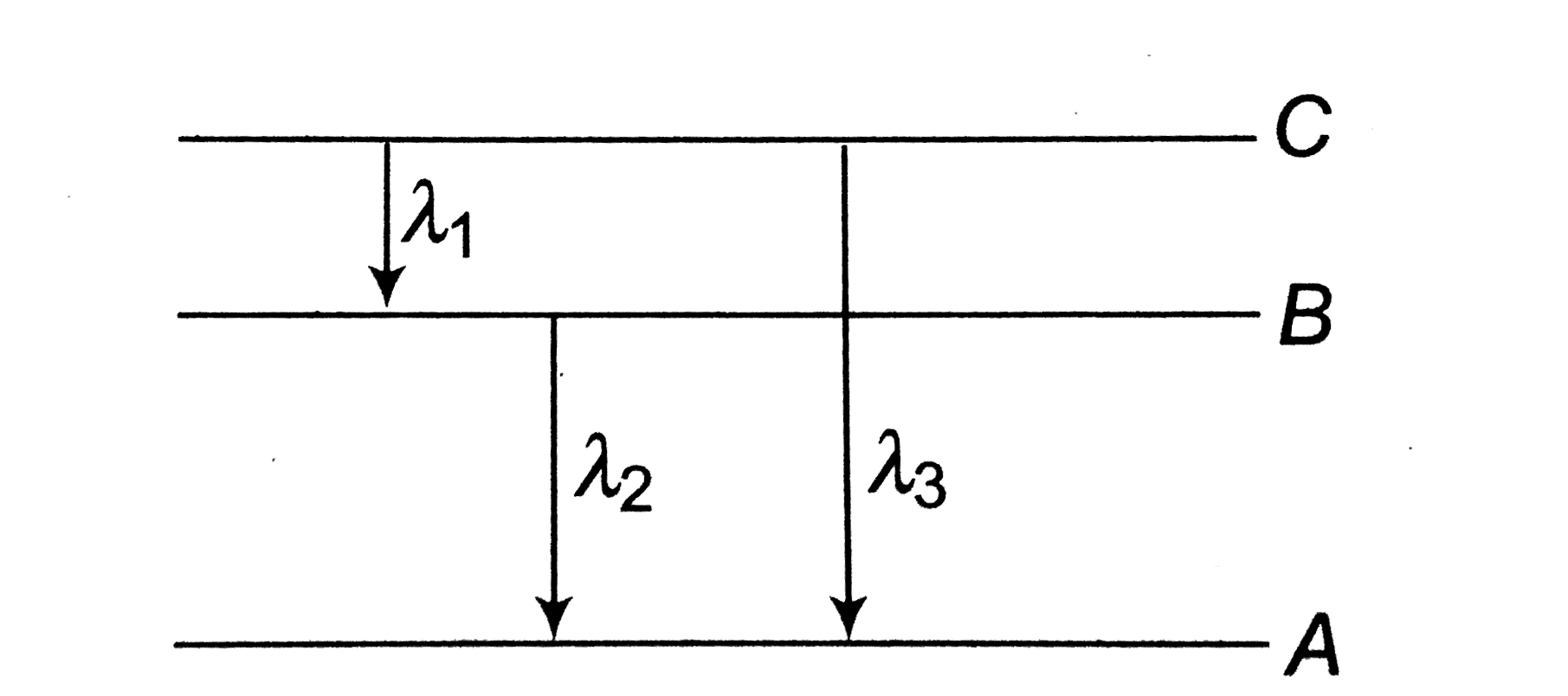Complete Solutions to Exercises of chapter BOHR THEORY of Class 12 book with complete answers and questions
| Class 12 | PHYSICS |
| Chapter | BOHR THEORY |
| CP SINGH | Exercises |
| Number Of Questions | 80 |
| Academic Year | 2023-24 |
A beam of fast moving alpha particles were directed towards a thin film of gold. The parts `A', B'` and `C'` of the transmitted and refected beams correcponding ro the incident parts `A, B` and `C` of the beam, are shown in the adjoining diagram. The number of alpha particles in
 04:53View Solution
04:53View SolutionIn a Rutherford scattering experiment when a projectile of change `Z_(1)` and mass `M_(1)` approaches s target nucleus of change `Z_(2)` and mass `M_(2)`, te distance of closed approach is `r_(0)`. The energy of the projectile is
01:28View SolutionAn `alpha`-particle of `5MeV` energy strikes with a nucleus of uranium at stationary at an scattering angle of `108^(@)`. The nearest distance up to which `alpha`particle reaches the nuvles will be of the order of
02:32View SolutionAn alpha nucleus of energy `(1)/(2)m nu^(2)` bombards a heavy nucleus of charge `Ze` . Then the distance of closed approach for the alpha nucleus will be proportional to
04:31View SolutionIn Rutherford scattering experiment, what will b ethe correct angle for `alpha` scattering for an impact parameter `b = 0` ?
01:16View SolutionWhich of the following is correct regarding Bohr's theory for hydrogen like atoms in `n^(th)` orbit
Time period : `T_(n)=(2pir_(n))/(v_(n))`
`K_(n)=-E_(n) : U_(n)=2E_(n)`
`r_(n) prop (n^(2))/(Z) , v_(n) prop (Z)/(n) , T_(n) prop (n^(3))/(Z^(2)) , E_(n) prop (Z^(2))/(n^(2))`
Angular momentum is independent of Z03:29View SolutionIn the Bohr model of the atom
(i) the radius of the `n^(th)` orbit is proportional to `n^(2)`
(ii) the total energy of the electron in `n^(th)` orbit is inversely proportional to n
(iii) the angular momentum of the electron in an orbit is an integral multiple of `h//2 pi`
(iv) the magnitude of the P.E. of the electron in an orbit is ` gt ` its K.E.02:23View SolutionThe minimum orbital angular momentum of the electron in a hydrogen atom is
00:49View SolutionWhich of the following parameters are the same for all hydrogen like atoms and ions in their ground state?
02:43View SolutionAs one considers orbits with higher value of n is a hydrogen atom, the electron potential energy of the atom
02:19View SolutionThe enrgy of an atom (or ion) in the ground state is `- 54.4 eV ` .If may be
02:15View SolutionThe angular speed of the electron in the `n^(th)` Bohr orbit of the hydrogen atom is proportional to
01:54View SolutionAccording to Bohr's theory, the ratio of the times taken by the electron in a hydrogen atom to complete one revolution in orbits corresponding to ground and first excited states is
01:48View SolutionThe ratio of the binding energies of the hydrogen atom in the first and the second excited states is
01:57View SolutionThe radius of the shortest orbit in a one electron system is 18 pm it may be
02:20View SolutionWhich of the following curve may represent the speed of the electron in a hydrogen atom as a function of the principal quantum number n?
01:32View SolutionIn hydrogen atom, if the difference in the energy of the electron in `n = 2` and `n = 3` orbits is `E`, the ionization energy of hydrogen atom is
06:09View SolutionAn orbit electron in the ground state of hydrogen has an angular momentum `L_(1)`, and an orbital electron in the first orbit in the ground state of lithium (dounle ionised positively) has an angular momentum `L_(2)`. Then :
02:16View SolutionIn Bohr's model of hydrogen atom, let `PE` represents potential energy and `TE` the total energy. In going to a higher level
03:16View SolutionThe ratio of the speed of the electrons in the ground state of hydrogen to the speed of light in vacuum is
02:22View SolutionWhich of the following products in a hydrogen atom are independent of the principal quantum number n? The symbols have their usual meanings
02:46View SolutionIn Bohr model of the hydrogen atom, let R,v and E represent the radius of the orbit, speed of the electron and the total energy respectively. Which of the following quantities are directly proportional to the quantum number n?
01:53View SolutionIonization energy of a hydrogen like A is greater than that of another hydrogen like ion Let r, u, E and L represent the radius of the orbit, speed of the electron energy of the atom and orbital angular momentum of the electron respectively, in ground state
03:50View SolutionWhich of the following statements about the Bohr model of the hydrogen atom is false ?
05:06View SolutionLet `A_(0)` be the area enclined by the orbit in a hydrogen atom .The graph of in `(A_(0) //A_(1))` against `ln(n)`
03:07View SolutionIn the Bohr model of a hydrogen atom, the centripetal force is furnished by the Coulomb attraction between the proton and the electrons. If `a_(0)` is the radius of the ground state orbit, `m` is the mass and `e` is the charge on the electron and `e_(0)` is the vacuum permittivity, the speed of the electron is
02:34View SolutionSuppose an electron is attracted toward the origin by a force`(k)/(r )` where `k` is a constant and `r` is the distance of the electron from the origin .By applying Bohr model to this system the radius of the `n^(th)` orbital of the electron is found to be `r_(n)` and the kinetic energy of the electron to be `T_(n)` , Then which of the following is true ?
01:56View SolutionThe electric potential between a proton and as electron is given by `V= V_(0) ln (r )/(r_(0))` , where`r_(0)` is a constant . Assuming Bohr's model to be applicable , write variation of `r_(n)` with `n,n` being the principal quantum number ?
05:54View SolutionA diatomic molecule is made of two masses `m_(1) and m_(2)` which are separated by a distance `r` . If we calculate its rotational energy by applying Bohr's rule of angular momentum quantization it energy will be ( n is an integer )
10:29View SolutionWith the increase in peinciple quantum number, the energy difference between the two successive energy levels
02:09View SolutionA hydrogen-like atom has one electron revolving around a stationary nucleus. The energy required to excite the electron from the second orbit to the third orbit is 47.2 eV. The atomic number of the atom is
01:58View Solutionif the electron in hydrogen orbit jumps form third orbit to second orbit, the wavelength of the emitted radiation is given by
01:11View SolutionThe ionisation potential of hydrogen atom is `13.6` volt. The energy required to remove an electron in the `n = 2` state of the hydrogen atom is
01:40View SolutionThe wavelength of the radiation emitted by a hydrogen atom in the electronic transition from n=3 to n=2 is `lambda`. For the same transition in the singly ionized helium, the wavelength of the emitted radiation is
02:04View SolutionA hydrogen atom in its ground state absorbs `10.2 eV` of energy. The orbital angular momentum is increased by
02:04View SolutionThe energy of the ground state of hydrogen atom is `-13.6 ` eV. The energy of the photon emitted in the transiton from n=4 to n=2 is
01:56View SolutionThe electron in a hydrogen atom makes a transition from an excited state to the ground state. Which of the following statements is true?
02:37View SolutionIn an `e^(-)` transition inside a hydrogen atom, orbital angular momentum may change by (h=Planck's constant)
02:09View SolutionIn which of the following transition will the wavelength be minimum ?
01:42View SolutionIn which of the following system will the wavelength corresponding to `n = 2 to n= 1`be minimum ?
01:31View SolutionOf the following transitions in a hydrogen atom, the one which gives an absorption line of highest frequency is
02:59View SolutionThe electron in a hydrogen atom makes a transition `n_(1) rarr n_(2)`, where `n_(1)` and `n_(2)` are the principle quantum numbers of the two states. Assume the Bohr model to be valid. The time period of the electron in the initial state is eight times that in the final state. the possible values of `n_(1)` and `n_(2)` are
02:14View SolutionIn a hypotherical Bohr hydrogen, the mass of the electron is doubled. The energy `E_(0)` and the radius `r_(0)` of the first orbit will be (`a_(0)` is the Bohr radius)
02:17View SolutionIn hydrogen atom, electron makes transition from `n = 4` to `n = 1` level. Recoil momentum of the `H` atom will be
02:22View SolutionFour lowest energy levels of `H`-atom are shown in the figure. The number of possoble emission lines would be
 01:36View Solution
01:36View SolutionThe wavelength of radiation emitted is `lambda_(0)` when an electron jumps from the third to the second orbit of hydrogen atom. For the electron jump from the fourth to the second orbit of hydrogen atom, the wavelength of radiation emitted will be
03:08View SolutionHydrogen `(H)`, deuterium `(D)`, singly ionized helium `(He^(+))` and doubly ionized lithium `(Li)` all have one electron around the nucleus. Consider `n = 2` to `n = 1` transition. The wavelength of emitted radiations are `lambda_(1), lambda_(2), lambda_(3)` and `lambda_(4)` respectively. then approximately
03:01View SolutionEnergy levels `A, B, C` of a certain atom corresponding to increasing values of energy i.e., `E_(A) lt E_(B) lt E_(C)`. If `lambda_(1), lambda_(2), lambda_(3)` are the wavelengths of radiations correspnding to the transitions `C` to `B, B` to `A` and `C` to `A` respectively, which o fthe following statements is correct?
 02:30View Solution
02:30View SolutionElectrons in a certain energy level `n=n_(1)` can emit 3 spectral lines. When they are in another energy level, `n=n_(2)`, they can emit 6 spectral lines. The orbital speed of the electrons in the two orbits are in the ratio
02:09View SolutionThe figure indicates the enegry level diagram of an atom and the origin of six spectral lines in emission (e.g. line no.`5` series from the transition from level `B` to `A`). The following spectral lines will also occur in the absorption spectrum
 03:30View Solution
03:30View SolutionThe ionisation potential of hydrogen atom is -13.6 eV. An electron in the ground state of a hydrogen atom absorbs a photon of energy 12.75 eV. How many diggerent spectral lines can one expect when the electron make a downward transition
02:35View SolutionHydrogen atom in ground state is excited by a monochromatic radiation of `lambda = 975 Å`. Number of spectral lines in the resulting spectrum emitted will be
02:32View SolutionA hydrogen sample is prepared in a particular state A photon of energy `2.55eV` get absorbed into the sample to take some of the electron to a farther excited state B find the quantum numbers of the state A and B
02:26View SolutionA hydrogen atom in a state having a binding energy of 0.85 eV makes transition to a state with excitation energy 10.2 eV. The quantum number n of the upper and the lower energy states are
03:03View SolutionImagine an atom made of a proton and a hypothetical particle of double the mass of the electron but having the same change as the electron. Apply the Bohr atom model and consider all possible transitions of this hypothetical particle of the first excited level. the longest wavelength photon that will be emitted has wavelength [given in terms of the Rydberg constant `R` for the hydrogen atom] equal to
03:25View SolutionIn an excited state of hydrogen like atom an electron has total energy of `-3.4 eV`. If the kinetic energy of the electron is E and its de-Broglie wavelength is `lambda`, then
01:43View SolutionLight form a dicharge tube containing hydrogen atoms falls on the surface of a piece of sodium. The kinetic energy of the fastest photoelectrons emitted from sodium is 0.73 eV. The work function for sodium is 1.82 eV. Find (a) the energy of the photons causing the photoelectrons emission.
(b) the quantum numbers of the two levels involved in the emission of these photons.
(c ) the change in the angular momentum of the electron in the hydrogen atom, in the above transition, and
(d) the recoil speed of the emitting atom assuming it to be at rest before the transition. (lonization potential of hydrogen is 13.6 eV.)04:51View SolutionThe electron in the hydrogen atom jumps from excited state (n=3) to its ground state (n=1) and the photons thus emitted irradiate a photosensitive material. If the work function of the material is 5.1eV, the stopping potential is estimated to be: (The energy of the electron in nth state is `E_(n)=-13.6//n^(2)eV`)
02:03View SolutionThree photons coming from excited atoms hydrogen sample are picked up .There energies are `12.1eV, 10.2eV and 1.9eV` these photons must come from
05:07View SolutionIn a laboratory experiment on emission from atomic hydrogen in a discharge tube only a small number of lines are observed whereas a large number of lines are present in the hydrogen spectrum of a star .This is because in a laboratory
01:43View SolutionThe de-Broglie wavelength of an electron in the first Bohr orbit is
02:14View SolutionConsider an eelctron in the nth orbit of a hydrogen atom in the Bohr model. The circumference of the orbit can be expressed in terms of the de Broglie wavelength `lambda` o fthat electron as
02:05View SolutionThe ratio of the longest and shortest wavelengths of the Lyman series is approximately
02:24View SolutionThe ratio of longest wavelength and the shortest wavelength observed in the five spectral series of emission spectrum of hydrogen is
03:05View SolutionIn terms of Rydberg's constant `R`, the wave number of the first Balman line is
01:48View SolutionThe wavelength of the first line of the Balmer series of hydrogen atom is `lamda`. The wavelength of the corresponding line line of doubly ionized lithium atom is
02:34View SolutionThe wavelength of the first line of Lyman series for hydrogen atom is equal to that of the second line of Balmer series for a hydrogen-like ion. The atomic number `Z` of hydrogen-like ion is
02:51View SolutionEvery series of hydrogen spectrum has an upper and lower limit in wavelength. The spectral series which has an upper limit of wavelegnth equal to `18752 Å` is
(Rydberg constant `R = 1.097 xx 10^(7)` per metre)02:31View SolutionLet `v_(1)` be the frequency of series limit of Lyman series, `v_(2)` the frequency of the first line of Lyman series and `v_(3)` the frequency of series limit of Balmer series. Then which of the following is correct ?
04:22View SolutionThe transtion from the state `n = 4 to n = 3 ` in a hydrogen like atom results in ultraviolet radiation Infrared rediation will be obtained in the transition from :
01:52View SolutionWhenever a hydrogen atom emits a photon in the Balmer series,
it may emit another photon in the Balmer series
it must emit another photon in the Lyman series
the second photon, if emitted, will have a wavelength of about 122 nm
it may emit a second photon, but the wavelength of this photon cannot be predicted02:56View SolutionA beam of ultraviolet light of all wavelength passes through hydrogen gas at room temperature, in the x-direction. Assume that all photons emitted due to electron transitions inside the gas emerge in the y-direction. Let A and B denote the lights emerging from the gas in the x-and y-directions respectively.
(i) Some of the incident wavelengths will be absent in A
(ii) Only those wavelengths will be present in B which are absent in A
(iii) B will contain some visible light
(iv) B will contain some infrared light03:26View SolutionWhen a hydrogen atom emits a photon in going from n=5 to n=1, its recoil speed is almost
03:18View SolutionThe radius of the hydrogen atom in its ground state is `5.3xx10^(-11)` m. The principal quantum number of the final state of the atom is
02:06View SolutionA photon of energy 10.2 eV corresponds to light of wavelength `lamda_(0)`. Due to an electron transition from n=2 to n=1 in a hydrogen atom, light of wavelength `lamda` is emitted. If we take into account the recoil of the atom when the photon is emitted.
02:16View SolutionAn electron with kinetic energy =E eV collides with a hydrogen atom in the ground state. The collision will be elastic
03:16View SolutionAn electron with kinetic energy `5eV` is incident on a hydrogen atom in its ground state.The collision
02:15View SolutionIf in nature they may not be an element for which the principle quantum number `n gt 4`, then the total possible number of elements will be
01:29View SolutionThe splitting of line into groups under the effect of magnetic field is called
01:53View SolutionThe size of an atom is of the order of
00:56View Solution
Exercises questions and complete solutions for chapter BOHR THEORY of CP SINGH PHYSICS (HINGLISH) of Class 12
